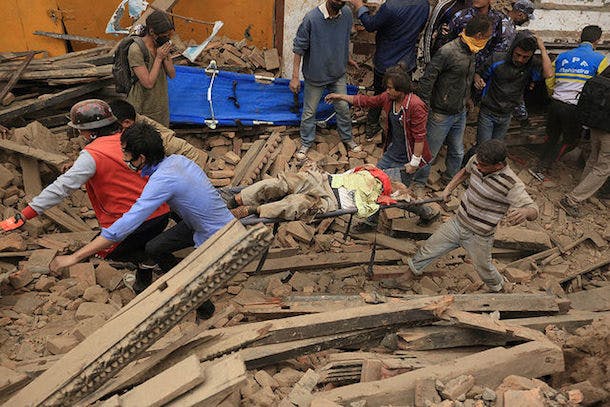 [This post is being updated periodically. The last update occurred at 9:55 am ET on Tuesday, May 12. Photo: Laxmi Prasad Ngakhusi / UNDP Nepal]
[This post is being updated periodically. The last update occurred at 9:55 am ET on Tuesday, May 12. Photo: Laxmi Prasad Ngakhusi / UNDP Nepal]
UPDATE: On May 12, Nepal was struck by another earthquake of 7.3 magnitude. More deaths, injuries, and building damage have been reported. United Nations humanitarian agencies continue to respond to the disaster and need your support. According to the UN Office for the Coordination of Humanitarian Affairs, only 13% of requested funding for the humanitarian response in Nepal has come through. Read more below on how you can help UN agencies deliver life-saving aid to Nepal.
A massive 7.8-magnitude earthquake devastated Nepal on April 25, 2015, affecting 39 of the country’s 75 districts and causing thousands of deaths, injuries, and significant damage to homes, buildings, health facilities, and cultural heritage sites. According to the United Nations, more than 8 million people have been affected. The government of Nepal has requested assistance to address critical humanitarian needs.
UN Under-Secretary-General for Humanitarian Affairs Valerie Amos was recently in Nepal to raise awareness of the crisis and assess response operations. She said: “I am heartened and encouraged by the generosity and solidarity shown to date, but I am also conscious of the urgent need to provide emergency shelter and basic goods and services to people affected as the monsoon season rapidly approaches. So many people have lost everything.”
The United Nations humanitarian system is urgently responding to the crisis:
- The UN Central Emergency Response Fund (CERF) has allocated $15 million for Nepal to “enable humanitarian partners to ramp up immediate assistance for shelter, water, logistics, and health.”
- The UN Office for the Coordination of Humanitarian Affairs (OCHA) is providing personnel to help coordinate search and rescue efforts, among other actions. OCHA has also issued a flash appeal calling for $415 million to respond to humanitarian needs for the next three months.
- The World Health Organization (WHO) is providing emergency health kits with supplies and medicine, as well as funds, to support urgent medical needs for 80,000 people. WHO is also helping Nepal’s Ministry of Health coordinate the arrival and deployment of medical teams and is setting up a field office to help reach remote areas..
- The World Food Programme (WFP) is providing logistics support and food for 1.4 million people in urgent need over the next 3 months. WFP is also operating a relief hub to manage cargo coming into the country.
- The UN Children’s Fund (UNICEF) is providing water purification tablets and hygiene kits and assisting children who have become separated from their families.
- The UN Refugee Agency (UNHCR) is sending thousands of plastic sheets and solar-powered lanterns to Nepal for people who lost their homes and are left in the dark.
- The UN Population Fund (UNFPA) is working with the government of Nepal and partners to deploy staff and provide reproductive health kits, noting the risks facing pregnant women in disasters.
-
The UN Development Programme will provide support for recovery and debris removal.
How You Can Help
You can donate to UN agencies providing humanitarian relief to families in Nepal:
Additionally, the UN Central Emergency Response Fund (CERF) collects donations year-round so there is a pool of money available to respond quickly to disasters, such as earthquakes. You can donate to CERF to help the UN provide immediate relief to people in their time of need.
Resources
UN Office for the Coordination of Humanitarian Affairs Nepal page: http://www.unocha.org/nepal
Flash appeal for Nepal from the UN Office for the Coordination of Humanitarian Affairs: https://www.humanitarianresponse.info/en/system/files/documents/files/nepal_flash_appeal.pdf
Follow @OCHAAsiaPac on Twitter.




 View All Blog Posts
View All Blog Posts